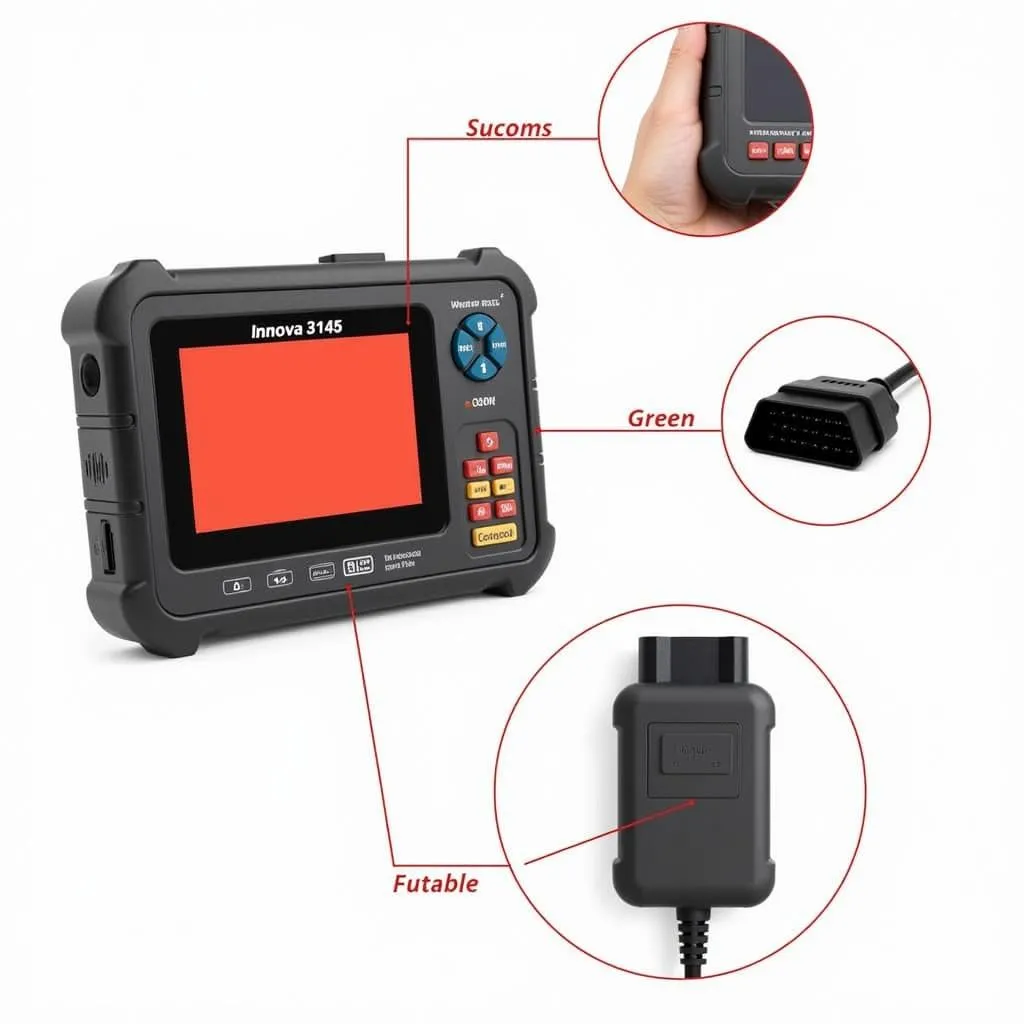In the world of automotive diagnostics, OBD1 readers for Ford vehicles hold a unique place. These tools provide a window into the electronic control units (ECUs) of older Ford models, allowing mechanics and car enthusiasts to diagnose and troubleshoot issues with greater precision. This article will delve into the intricacies of OBD1 readers designed for Ford, exploring their functions, benefits, and how they can help you keep your classic Ford running smoothly.
What is an OBD1 Reader for Ford?
An OBD1 reader, or On-Board Diagnostics generation 1 reader, specifically for Ford vehicles is a specialized tool designed to interface with the standardized diagnostic system found on Ford cars and trucks manufactured before 1996. Unlike their OBD2 counterparts, which utilize a universal 16-pin connector and communication protocol, OBD1 systems for Ford employed various connectors and protocols depending on the model year and engine type.
 OBD1 Connector Types
OBD1 Connector Types
Why You Might Need an OBD1 Reader for Your Ford
While modern vehicles feature comprehensive OBD2 systems, older Ford models require specific OBD1 readers to access diagnostic information. This is particularly crucial for:
- Troubleshooting Engine Issues: OBD1 readers allow you to read and interpret diagnostic trouble codes (DTCs) stored in the vehicle’s ECU. These codes pinpoint areas of concern, such as sensor malfunctions, fuel system issues, or ignition problems.
- Analyzing Sensor Data: Beyond DTCs, OBD1 readers grant access to live data streams from various sensors, including oxygen sensors, throttle position sensors, and engine speed sensors. This information aids in understanding engine performance and identifying potential issues before they escalate.
- Resetting Warning Lights: After addressing an issue, an OBD1 reader can be used to clear the check engine light and other warning indicators on the dashboard.
 Mechanic Using OBD1 Reader on Ford
Mechanic Using OBD1 Reader on Ford
Types of OBD1 Readers for Ford
Navigating the realm of OBD1 readers for Ford can seem daunting due to the variety available. They can be broadly categorized into:
- Code Readers: These basic devices primarily focus on retrieving and displaying DTCs. They are a budget-friendly option suitable for identifying the root cause of a check engine light.
- Scan Tools: Offering more advanced functionality, scan tools provide access to live sensor data, allowing for real-time monitoring of engine parameters. Some models may also offer additional features like data logging and graphing.
- Manufacturer-Specific Scanners: Designed explicitly for Ford vehicles, these high-end scanners provide comprehensive diagnostic capabilities, including access to module-specific codes, bi-directional controls for actuator tests, and advanced programming functions.
Choosing the Right OBD1 Reader for Your Ford
Selecting the appropriate OBD1 reader depends largely on your specific needs and the year and model of your Ford. Consider the following factors:
- Vehicle Compatibility: Ensure the reader is compatible with your Ford’s specific OBD1 system. Consult the product documentation or contact the manufacturer to confirm compatibility before purchasing.
- Features and Functionality: Determine the level of diagnostic depth you require. Simple code readers suffice for basic troubleshooting, while scan tools or manufacturer-specific options are better suited for in-depth analysis and repairs.
- Ease of Use: Opt for a user-friendly device with a clear display, intuitive menus, and comprehensive documentation. Some readers offer features like code definitions and troubleshooting tips directly on the device, simplifying the diagnostic process.
Innova 3145 Ford Digital OBD1 Code Reader – A Closer Look
The Innova 3145 is a popular choice for a Ford OBD1 reader. It’s known for its ease of use and affordability. You can find in-depth reviews and comparisons on DiagXcar.
 Innova 3145 OBD1 Reader
Innova 3145 OBD1 Reader
Beyond the Reader: Understanding OBD1 Codes
Once you’ve connected your OBD1 reader, understanding the codes it retrieves is key. Ford OBD1 codes typically consist of two digits. Resources like DiagXcar’s Ford OBD1 code reader section provide comprehensive code definitions and potential causes for different DTCs.
OBD1 vs. OBD2: What’s the Difference?
You might be wondering about the differences between OBD1 and OBD2. While both aim to provide diagnostic insights, they differ significantly in their implementation. Learn more about the difference between OBD1 and OBD2.
Conclusion
An OBD1 reader for your Ford vehicle is an invaluable tool for both DIY enthusiasts and professional mechanics. By understanding the intricacies of your vehicle’s OBD1 system and selecting the appropriate reader, you can unlock a wealth of diagnostic information, enabling you to maintain and repair your classic Ford with confidence.